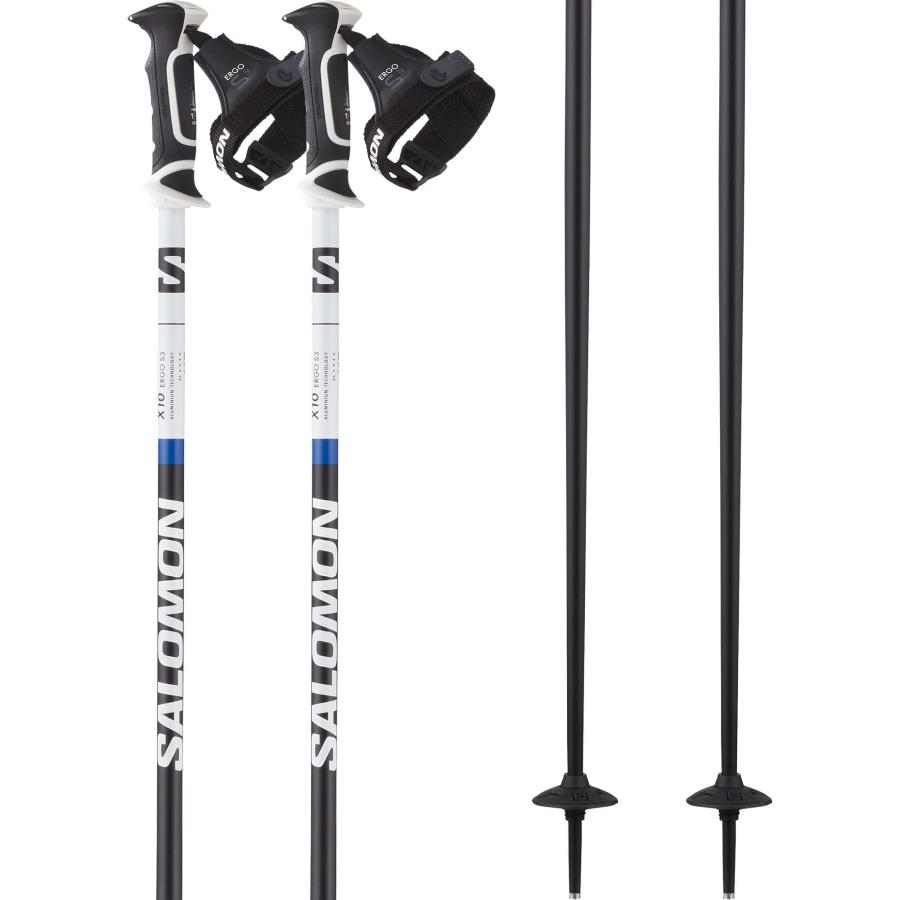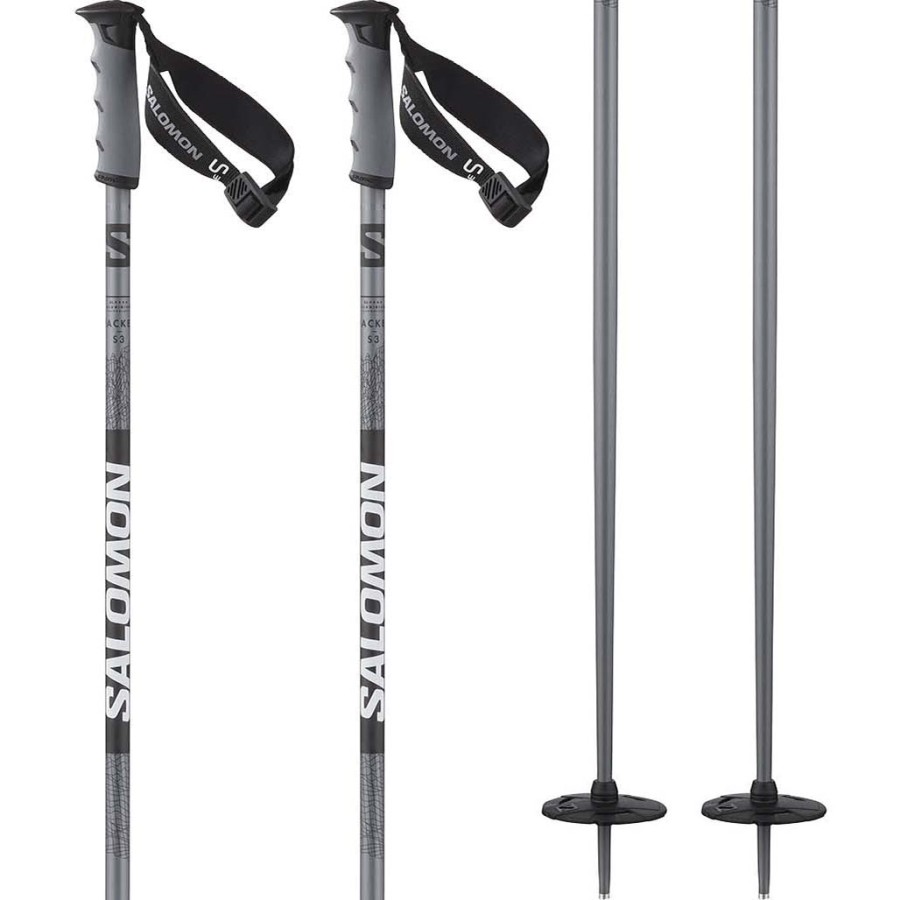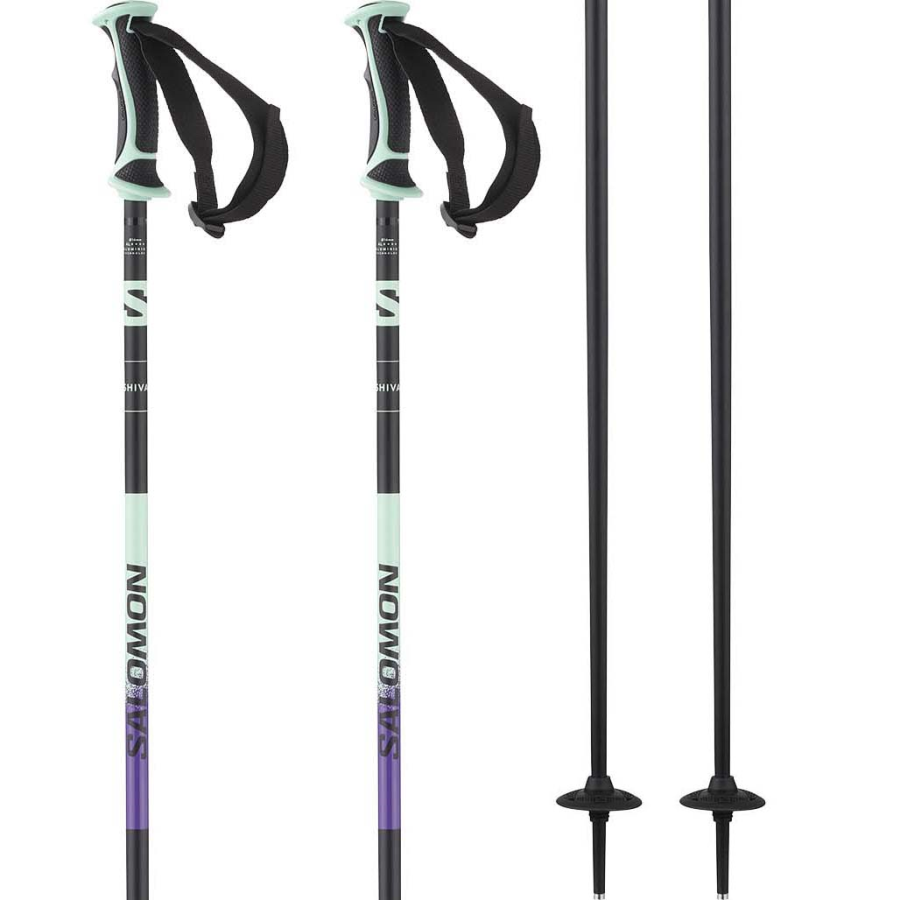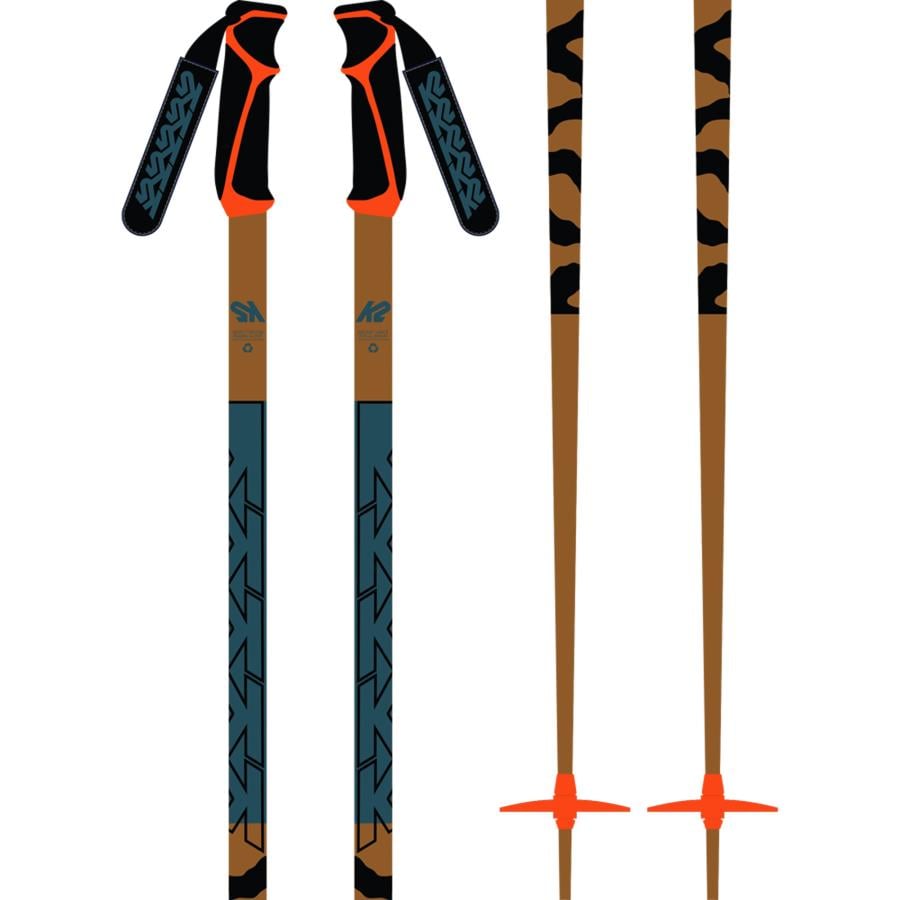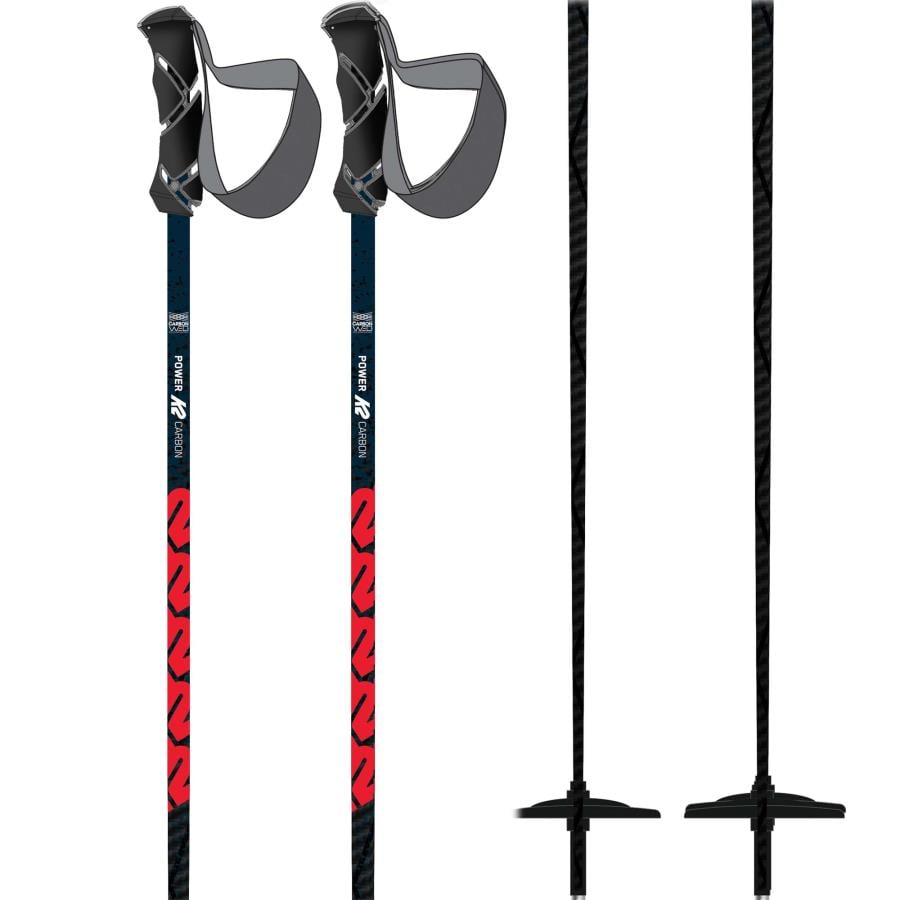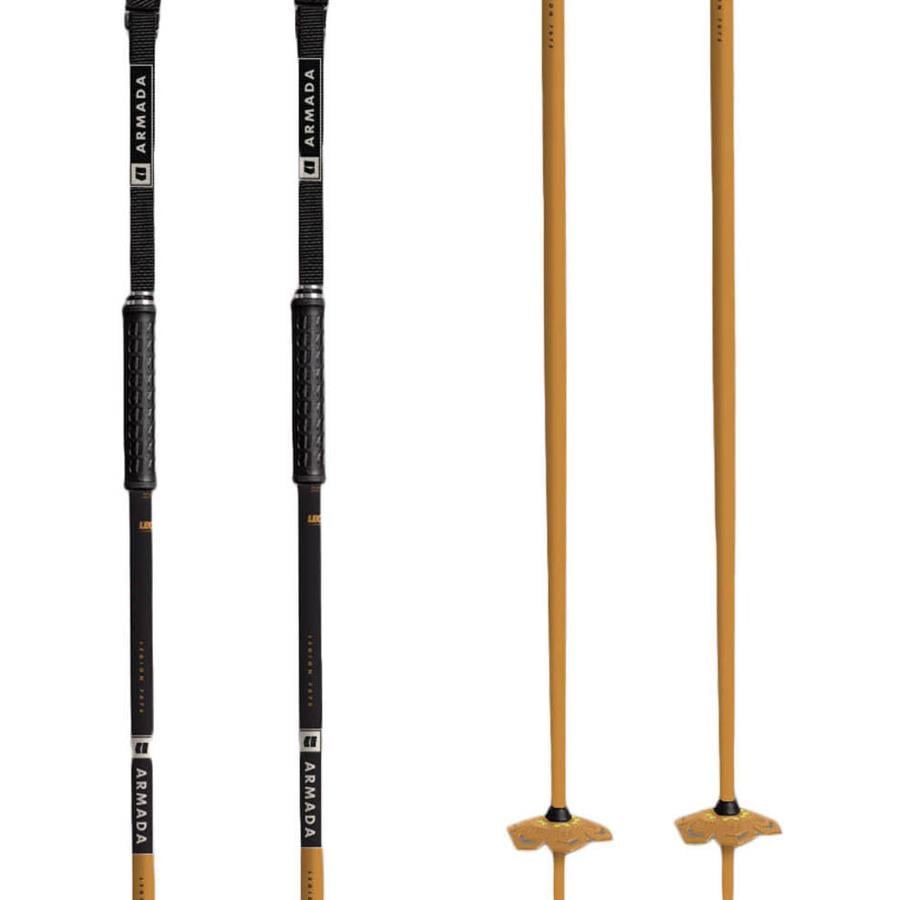The Absolute Guide to Buying Ski Poles
.png)
For some people a pair of ski poles is just a pair of poles, nothing fancy, nothing over the top. For others a ski pole is a precision piece of equipment that can help change the way they ski. However you see your ski poles it is still important to choose the right ones. Poles that are too long or too heavy can be cumbersome and awkward whereas poles which are too short might not provide you with the right balance.
Follow the guide below and you'll get all the information you need to choose the right ski poles for you.
The truth is that there is not right or wrong answer here. An incorrectly sized pole can cause you problems and could even hinder your skiing however a certain degree of personal preference also comes into play. Some people like to have a longer ski pole which they can plant and turn around whereas other prefer their poles shorter where they are nothing more than an additional balance aid.
If you're unsure then keep to the size chart below, it's spot on for 99% of skiers! If you have used longer or shorter poles in the past then stick with what you know.
Why ski with longer poles?
- You like to plant your pole and turn round it
- You will be skating or traversing flat tracks
- You will be doing Nordic or Cross Country skiing
Why ski with shorter poles?
- You will be skiing a lot of deep snow
- You will be skiing a lot of park
- You want a pole with a low swing weight
Check out the size chart below for a good idea of what size poles will suit you. Remember personal preference means you can ski with poles longer or shorter. Almost all ski poles come in 5cm/2" increments.
| Skier Height | Pole Length | ||
|---|---|---|---|
| cm | ft | cm | Inches |
| < 101 | < 3'4" | 80 | 32 |
| 104 - 112 | 3'5" - 3'8" | 85 | 34 |
| 114 - 122 | 3'9" - 4'0" | 90 | 36 |
| 125 - 132 | 4'1" - 4'4" | 95 | 38 |
| 135 - 142 | 4'5" - 4'8" | 100 | 40 |
| 145 - 152 | 4'9" - 5'0" | 105 | 42 |
| 155 - 160 | 5'1" - 5'3" | 110 | 44 |
| 163 - 168 | 5'4" - 5'6" | 115 | 46 |
| 170 - 175 | 5'7" - 5'9" | 120 | 48 |
| 178 - 183 | 5'10" - 6'0" | 125 | 50 |
| 186 - 190 | 6'1" - 6'3" | 130 | 52 |
| > 193 | > 6'4" | 135+ | 54+ |
Alpine ski poles are the most popular type of ski poles as they suit the majority of skiers. Alpine ski poles will have a straight shaft, comfortable handle and standard hard snow basket making them suitable for use on piste and occasionally off piste.
Some alpine ski poles will come with special features such as additional snow baskets which can be easily changed to suit soft snow or powder skiing. If you spend most of your time cruising the piste then alpine ski poles are the best for you.

Powder or backcountry ski poles offer improved soft snow performance.
This is usually through the use of a large snow basket which improves float and prevents the poles from sinking. Powder and backcountry poles will sometimes have a thicker shaft to protect them from hitting rocks or trees in the backcountry. Some backcountry and powder poles also come with adjustable shaft lengths.
This allows you to transport them easily and even pack them away inside a backpack as well as adjusting them for varied terrain. We recommend sizing down slightly for a powder/backcountry ski pole to reduce swing weight and improve performance.

Some people like to ski freestyle or park without ski poles whilst others like the additional balance and ability to push along the flat that poles offer. Freestyle or park poles are often much shorter than other ski poles and have skinnier shafts and grips.
This makes sure that they don't get in the way when hitting park features such as rails and boxes but still help to increase your balance. Sizing for freestyle and park poles is much ore subjective than other ski poles and is down to personal preference. We would recommend trying a few different sized poles to get a feel for what you are after.

Race poles are more specialist than alpine, powder or park poles. They often have an ergonomic shape and feature high tech constructions including materials such as carbon and fibreglass. Ergonomic shaped poles hug around your body to reduce drag, allowing you to ski faster. They are also less likely to get caught on slalom gates. High tech constructions such as carbon and fibreglass allow race poles to be much stronger and lighter than traditional aluminium poles.
This does however make them more expensive. Some poles even incorporate new shaft designs including triangular shapes to increase strength and reduce weight even further.

Nordic ski poles - also called cross country ski poles - are designed for hiking, trekking, snowshoeing, skating and cross country skiing. They usually have very narrow shafts and lightweight constructions and feature a spiked tip with a different shaped basket to traditional ski poles. This allows you to get maximum power when pushing along. Nordic and cross country ski poles are sized differently to most other poles.
You would generally choose a pole that reaches up to your collarbone or chin, depending on the type of Nordic skiing you will be doing.

The most commonly used material for ski poles is aluminium. This is due to its lightweight, high tensile strength. Aluminium comes in different grades which determines if any other materials make up the alloy. The most common alloys added to ski poles are magnesium, silicon and zinc. This is due to their resistance to temperature and weather as well as their strength. Aluminium ski poles are high quality but don't come with the huge price tag that other constructions do making them ideal for most skiers.
Aluminium ski poles do still vary in cost as a result of the type of aluminium used and additional features such as high quality grips.
Fibreglass offers the highest strength to weight ratio of any ski pole material allowing fibreglass ski poles to be slimmer and lighter without compromising performance. This makes fibreglass ski poles popular with racers and people wanting maximum performance.
Fibreglass is often blended with carbon to improve the qualities of each material so is more commonly found in composite poles. Blending these materials also makes the poles cheaper as fibreglass poles can be very expensive.
Carbon is often seen as the pinnacle of ski pole construction. Carbon fibre ski poles offer pne of the highest strength to weight ratios possible however tend to snap rather than bend like aluminium poles do. Because of this carbon fibre is often blended with other materials to improve the characteristics of the pole and to make them more elastic meaning they return to their original shape.
This being said, it is very difficult to break a carbon ski pole. Generally speaking, the more expensive the pole the greater the ratio of carbon to other materials.
Composite ski poles are a blend of materials which have been chosen for their specific properties.
This can include aluminium, fibreglass, graphite, carbon, resin and others. The most common composite materials used are carbon fibre and fibreglass. Composite poles offer improved shock absorption over aluminium ski poles and conduct the cold less meaning your hands are likely to stay warmer!
Composite ski poles cost more than traditional aluminium poles and tend to break whereas an aluminium pole will bend.
Ski pole grips are most commonly made from plastic or rubber although they can include other materials such as cork.
Ski pole grips are ergonomically shaped to your hand making them easy to hold even with gloves worn. Simple ski poles tend to have a basic notch for your index finger and thumb to grip and then a simple flatter grip for the rest of your fingers. These pole grips are often better for people who like to ski wearing mittens rather than gloves. More expensive poles tend to have higher quality grips which are overmolded with notches for each individual finger helping improve your grip on your pole.
It is becoming increasingly popular with freestyle and park skiers to have a very slim pole grip that isn't ergonomically shaped. This is because it reduces bulk and makes it easier to reach for grabs and tricks. Check some of the different ski pole grip types below.

Snow baskets are one of the most important parts of a ski pole. Without them a pole would be pretty useless. Snow baskets prevent your pole from sinking too far into the snow and help to improve balance and counter the heavier weight of the handle end of the pole.Baskets come in two main types: hard snow & soft snow. Hard snow baskets are suitable for piste, park and all mountain riding.
Soft snow baskets are bigger to increase their surface area. This prevents them from sinking in softer snow such as powder. This makes them ideal for powder and backcountry riding.
All manufacturers make their baskets look a little bit different but see the image below for the basic sizes and shapes of hard snow baskets on the left and soft snow baskets on the right.

Ski pole straps connect to the pole grip and go around your wrist. They are designed so that you if you drop the pole you don't lose it! Most wrist straps are made from nylon which is woven strongly to prvent tearing. Most are adjustable with more expensive poles having better adjustment methods and better quality straps, some of which include comfortable neoprene padding.
Certain Nordic poles have an ergonomically shaped wrist strap which is designed to maximise energy transmission when skating along. Some manufacturers are now starting to introduce safty systems which release the strap during a large fall to prevent damage to the user.
There are also wrist straps which integrate with gloves or can be detached from the pole meaning you don't have to fiddle around taking off awkward straps every time you want to get on a lift or get something out of your pockets.
Check out some of the different styles of wrist strap available below: Detachable/Glove Compatible, Neoprene, Grab Tab and Standard.

Ski pole tips don't differ much between models and manufacturers. A ski pole tip is a small metal piece pushed into the end of the shaft to both seal the end of the pole and offer increased grip.It also gives the pole a better surface with which to push into the snow.
Cheaper ski poles tend to have steel tips whereas more expensive poles will use stronger more durable materials such as carbide.
Check out our latest ski poles
Check out our full range of Ski Poles today!
Need further advice? We're here to help!
Check out our Ski Buying Guides for technical tips and advice when buying your ski equipment.
Visit our Help Centre to speak to our experts.
